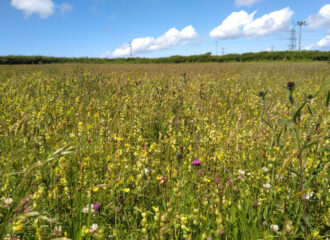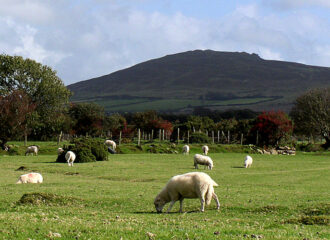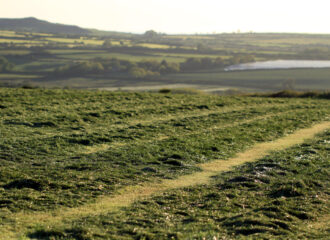The vast majority of grassland habitats in Wales are agriculturally-improved and support little of biodiversity interest for either the fauna or flora. The loss of species-rich hay meadows from the Welsh landscape is well documented, with more than 95% being lost, primarily through conversion to silage and permanent pasture, since the 1950s. Of those that remain, many are degrading in quality, either through eutrophication (from neighboring fields and/or nitrogen depositions), or from neglect. Vast tracts of grassland in Wales are now virtually barren of biodiversity interest and it is now possible to drive around the Welsh countryside for hours in winter and not see a flock of thrushes, finches, larks or buntings such is the damage caused by decades of overgrazing, ploughing, reseeding, fertiliser treatments and pesticide applications.
Agricultural grasslands

Hay meadows
It is estimated that some 97% of UK hay meadows were lost to changing agricultural practices in the 50 year period from 1930 to 1980. Unfortunately, hay meadow habitats in Wales are continuing to decline and degrade, with the better examples becoming few and far between. The more common modified hay meadow habitats are described…

Pasture
Pastures differ from hay meadows by being grazed by animals throughout the year, typically sheep, cattle and horses in Wales, as opposed to being closed out to animals and cut for hay during the summer months. However, as with hay meadows, most Welsh pastures are extremely species-poor, primarily as a consequence of historic management practices,…

Silage
Silage has largely replaced hay as the main winter feed for animals in the UK, at a huge cost to the biodiversity of farmland in Wales. Silage seed mixes can be one-year to five-year leys, are typically dominated by highly productive grass cultivars and/or legumes and can produce sufficient biomass to allow three or more…

